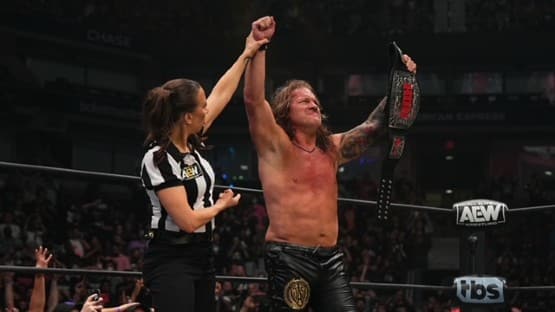
I’m an AEW mark, watch every TV show from beginning to end, buy every pay-per-view, go to live shows, even though the company never comes within three hours of where I live.
I give you that background to preface the reckoning that I’m setting out here for AEW: that AEW is basically 2010 TNA/Impact with better production values.
The flagship AEW TV show, “Dynamite,” debuted in 2019 – I was there in Washington, D.C., part of the sellout crowd for the live show – to an eye-popping 1.4 million viewers on TNT.
That Week 1 number, as it turned out, would be as good as it would get for AEW in terms of TV reach. The TV numbers had settled in around 1 million per week last summer, but that was before the infamous “Brawl Out” backstage melee following the otherwise perfectly done “All Out” pay-per-view last September.
The fallout from the “Brawl Out” after “All Out” has pushed the numbers for “Dynamite” consistently under that 1 million plateau. This week’s show reached a nadir, averaging a paltry 809,000 viewers, the lowest for a “Dynamite” in its regular time slot since June 24, 2020, toward the end of the first quarter of the COVID pandemic.
More worrisome has to be the decline in quarter-hour ratings for the company’s big stars. The main event quarter-hour on June 14, for instance, featuring The Elite (company executive vice presidents Matt and Nick Jackson and former AEW world champ Kenny Omega) against the Blackpool Combat Club (featuring former AEW world champ Jon Moxley and Ring of Honor world champ Claudio Castagnoli) averaged an alarming 699,000 viewers.
And then there’s “Collision,” the new Saturday-night show featuring CM Punk, the other side of the “Brawl Out” to the guys from The Elite.
The debut show averaged an impressive (for a Saturday-night show) 816,000 viewers, with Punk’s show-opening promo averaging a healthy 868,000.
By Week 2, the show had already shed more than 25 percent of its opening-night audience, averaging 595,000 viewers, the high-water mark coming in the main event quarter-hour, with Punk in a multi-man tag-team main event averaging 634,000.
The numbers told one story; the reaction of the crowd in Toronto told another.
The obviously pro-Elite crowd in town for the “Forbidden Door” pay-per-view the following night booed Punk lustily and consistently, the go-home heat for him providing tangible evidence of the self-inflicted damage from the months of anti-Punk leaks to the likes of Wrestling Observer newsletter editor Dave Meltzer.

The kneecapping of Punk, one of the company’s two identifiable mainstream stars, the other being Chris Jericho, is unfortunately par for the course for how AEW has come to approach its marketability, or lack thereof.
Punk and Jericho are both former WWE champs, the level of star that could get a lapsed wrestling fan flipping through the channels on a random Wednesday or Saturday to stop and get a look to see what they’re up to these days.
As good as the company’s foundational stars, like the Jacksons, Omega, the current world champ, MJF, are, they’re not mainstream names, and as much as their hardcore fans love them and go to war for them online, their marketability has a limited reach.
AEW, as a result, is basically where TNA/Impact was in 2010, when that company tried to go mainstream by bringing in big names like Ric Flair, Hulk Hogan and Mick Foley, and couldn’t figure out how to balance giving TV time to the names around needing to build around its emerging stars, guys like AJ Styles and Samoa Joe.
TNA/Impact blew through a ton of money, and some of you reading this know that it still exists today, but as a shell of its former self.
At least the people in charge of TNA/Impact, back in the day, knew not to kneecap themselves by allowing their talents to undermine each other by planting negative stories with their friends in the dirtsheet business, and engaging in machinations behind the scenes to keep top guys from being featured in prominent spots.
Tony Khan’s AEW can’t seem to get out of its own way, and despite having four years of TV data to demonstrate that the audience just isn’t growing, and is in fact retracting, the focus there continues to be on letting guys use Khan’s money to settle personal scores, not on growing the business.
The shame of this is for people like me, who love the AEW product, and have long since decided that what WWE offers just isn’t a watchable alternative.
I’ve personally invested a lot into seeing this AEW product succeed and grow, and it’s frustrating to realize that the people in charge don’t seem to take the business part of the business at all seriously.
I’ll continue watching, because I like the AEW product, but I’m giving up on the idea that it’s ever going to reach its potential.










